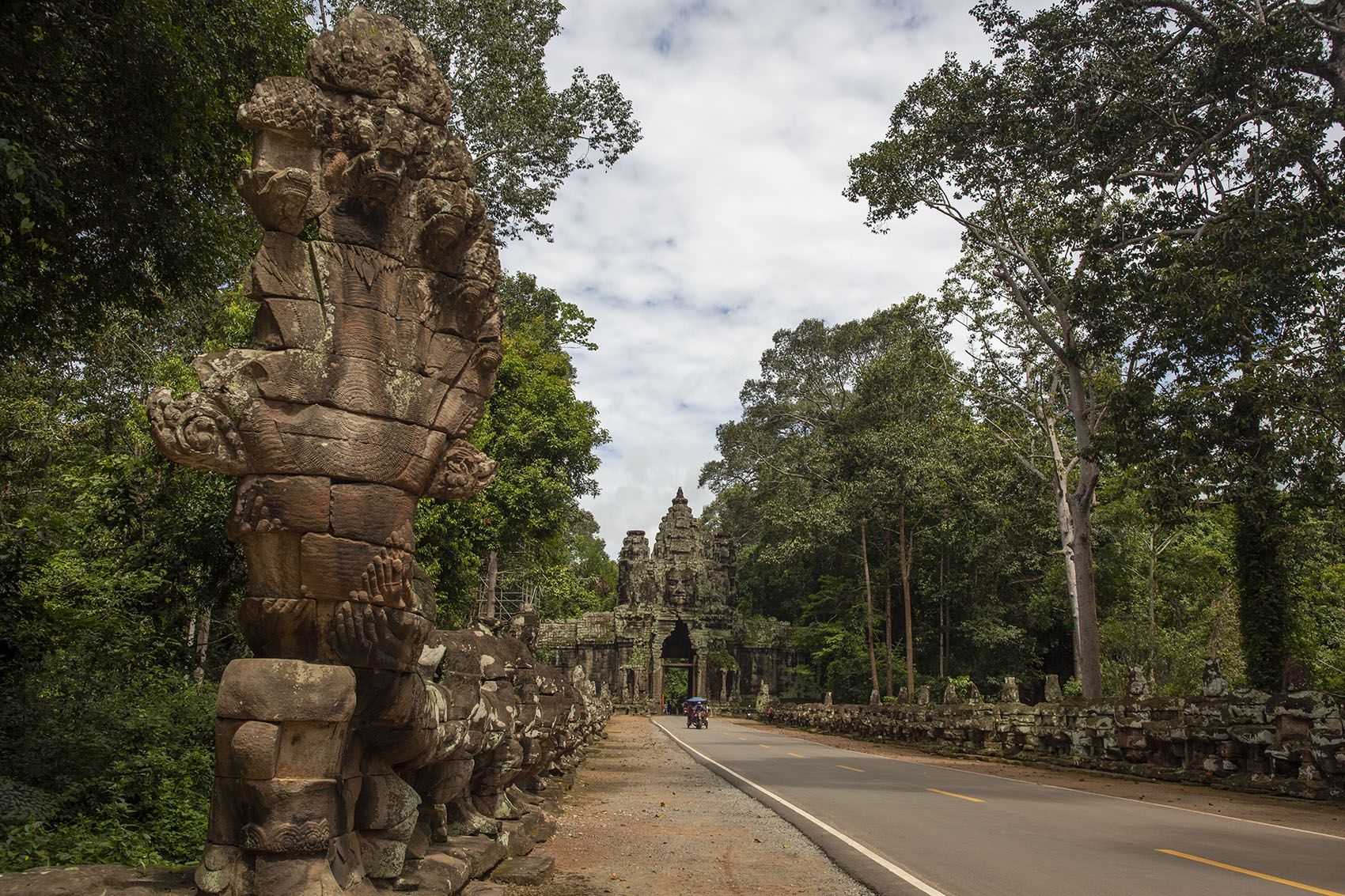- Area: Siem Reap Province > Krong Siem Reab > Sangkat Nokor Thum
- | Type: Ancient Remains & Temples
Thvear Chey, or Victory Gate of Angkor Thom, is one of the five gates of Angkor Thom, located on the eastern side and north of the Gate of the Dead.
Interestingly, the other four gates are located on cardinal points having a particular symmetry from an overall design based on Hindu beliefs. Victory gate, however, is on a non-secular axis with the Terrace of the Elephants and the Royal Palace of Angkor Thom, the terrace of the East Baray which lies 1.5km to the east, and in turn the East Mebon Temple some 5km to the east.
As per the other four gates providing entrance to Angkor Thom, Victory Gate is a stunning ancient marvel preceded by a moat with a stone causeway that is lined with a grand naga railing being pulled by 54 stone giants, Asuras and Devas, representing the constant tug of war between good and evil and the ‘Churning of the Sea of Milk’ from Hindu mythology. Few heads of the Asuras and Devas remain and this naga railing can be enjoyed in superior condition on the southern gate.
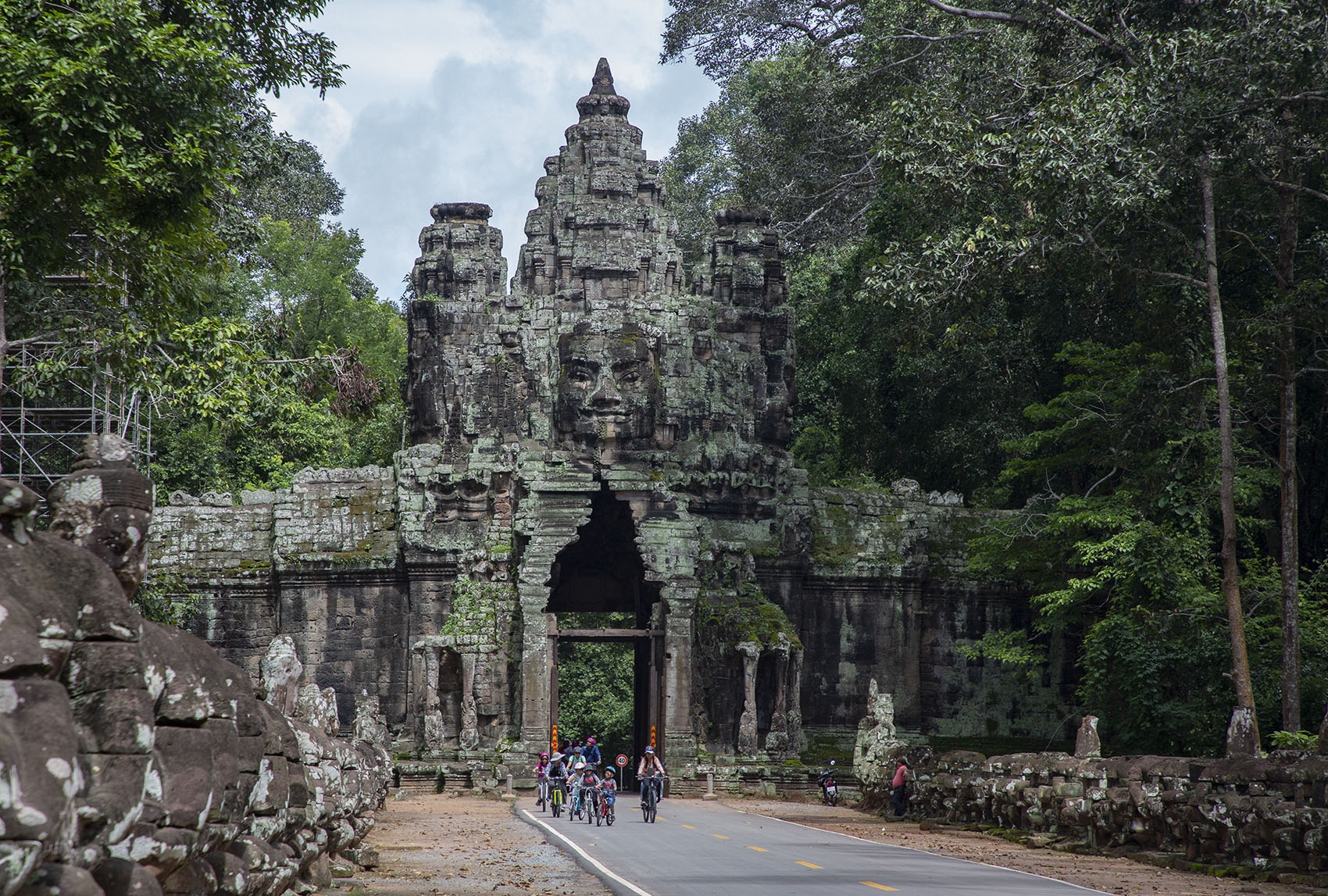

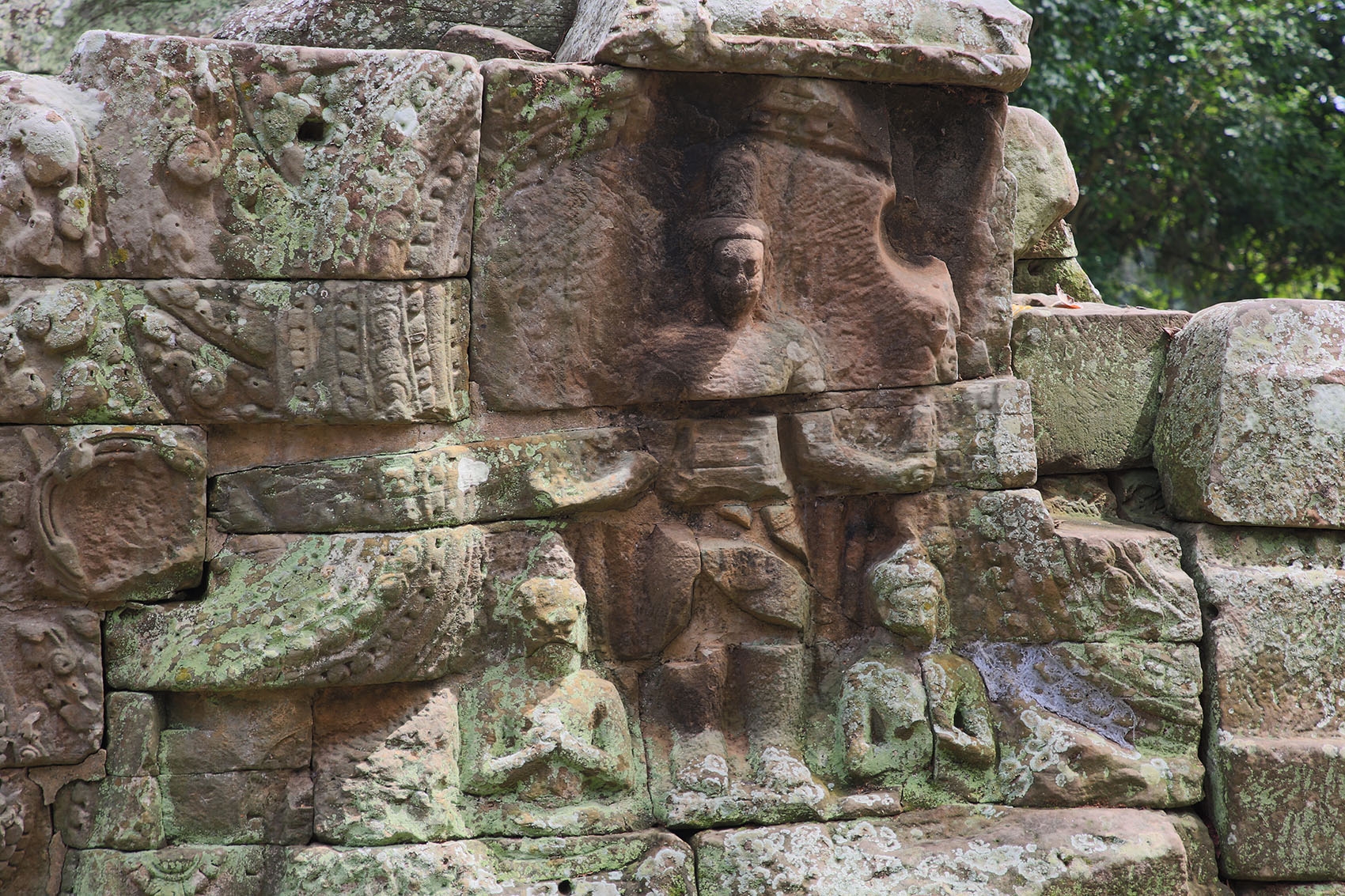
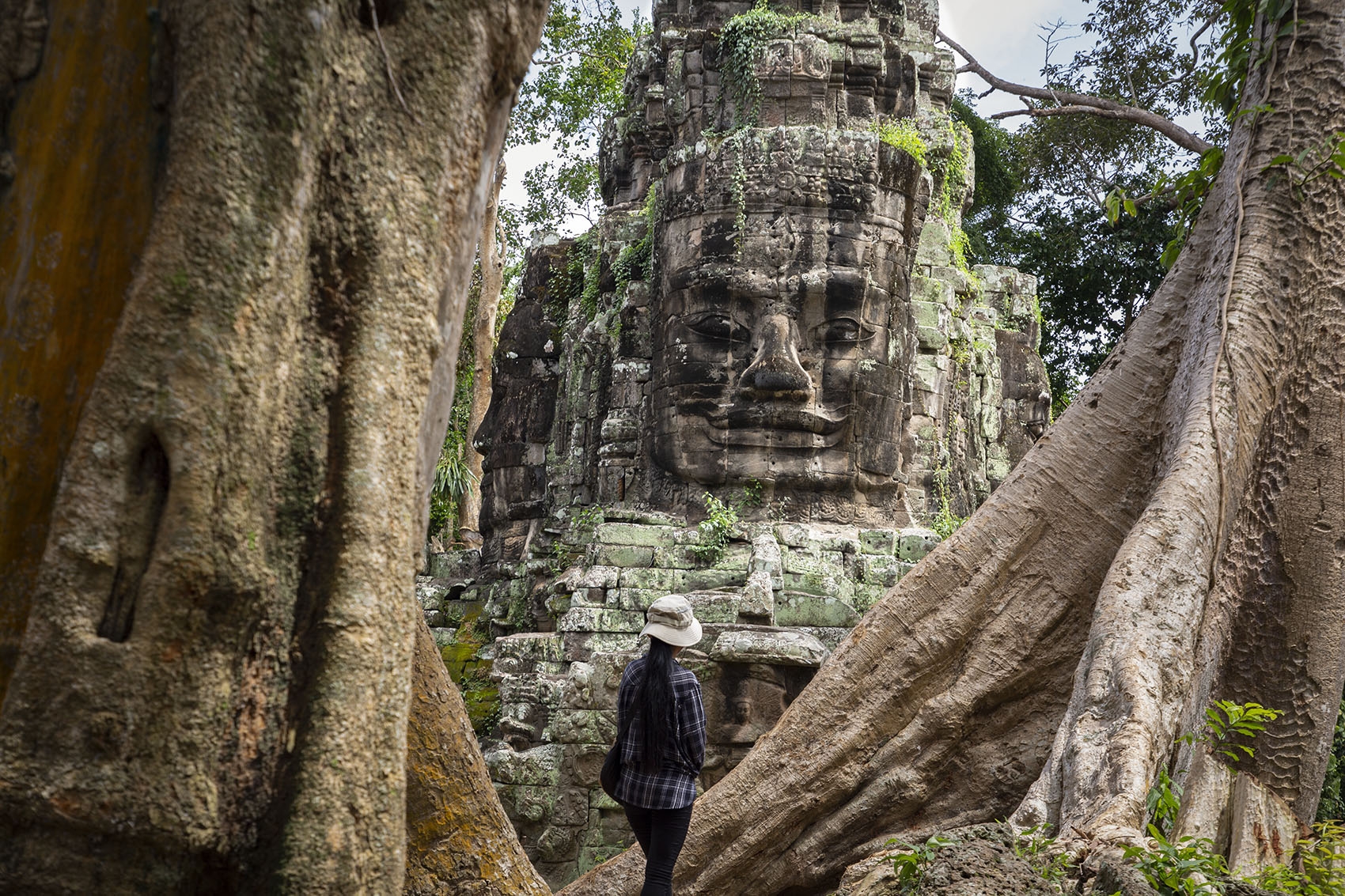

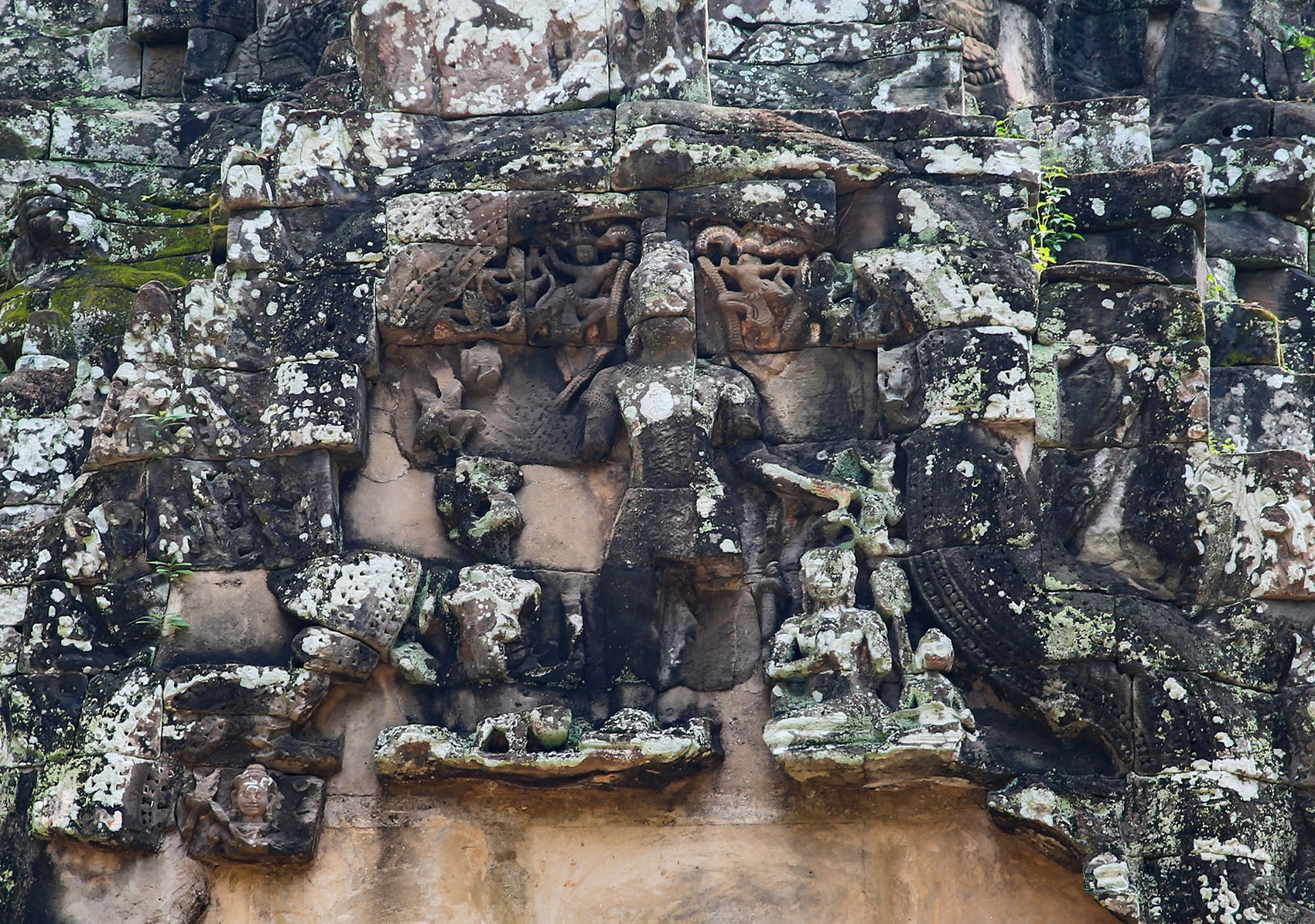
As per the other four gates, a trio of elephants flank either side of the doorway, pulling up lotus from the waters below with their trunks and in places, you can see remnants of the artwork surrounding them.
Above the elephants are three figures, a man flanked by two devas whom many believe to be a depiction of the king Jayavarman VII, holding the sacred vajra (lightning bolt), with his two queens on either side. Others, notably Henri Marchal, consider it to be a depiction of Indra flanked by two divinities. In Lois Delaporte’s drawings of Angkor from the late 1800s, he depicts a figure holding a club, something which is not seen today.
Rising above them is a row of devata in prayer above which are the four massive and beautifully carved faces, pointing in each direction. In between the faces are singular devata with long flowing locks of hair imitating the beautiful native vines of the region.
The four gigantic smiling faces feature a diadem, a diamond shape on their forehead, and an ornate crown. Atop the four faces, are three towering prasats, the central tower being the tallest rising up with three false levels with false doors on each side and seemingly ornate lintels and pediments before reaching its lotus flower crown and spire.
The entrances originally featured ornate pediments, part of which still remains to be seen on the western side of the gate, depicting Avalokiteshvara flanked by worshippers. This is the only gate that features remnants of its artistic pediment.
Climbing up the wall from the inside on the southern side, you can see an ornate pediment still relatively intact and get some fantastic shots of the massive faces between the trees that have overtaken the wall. You can also walk along the top of the wall to Prasat Chrung SE. Climb up the wall on the northern side and there are more opportunities for charismatic photos, and you can walk from here to Prasat Chrung NE which takes around 20-30 minutes.
Odd points of interest
Much like its western counterpart, the causeway appears to be constructed from sandstone pieces recycled from a prior structure.
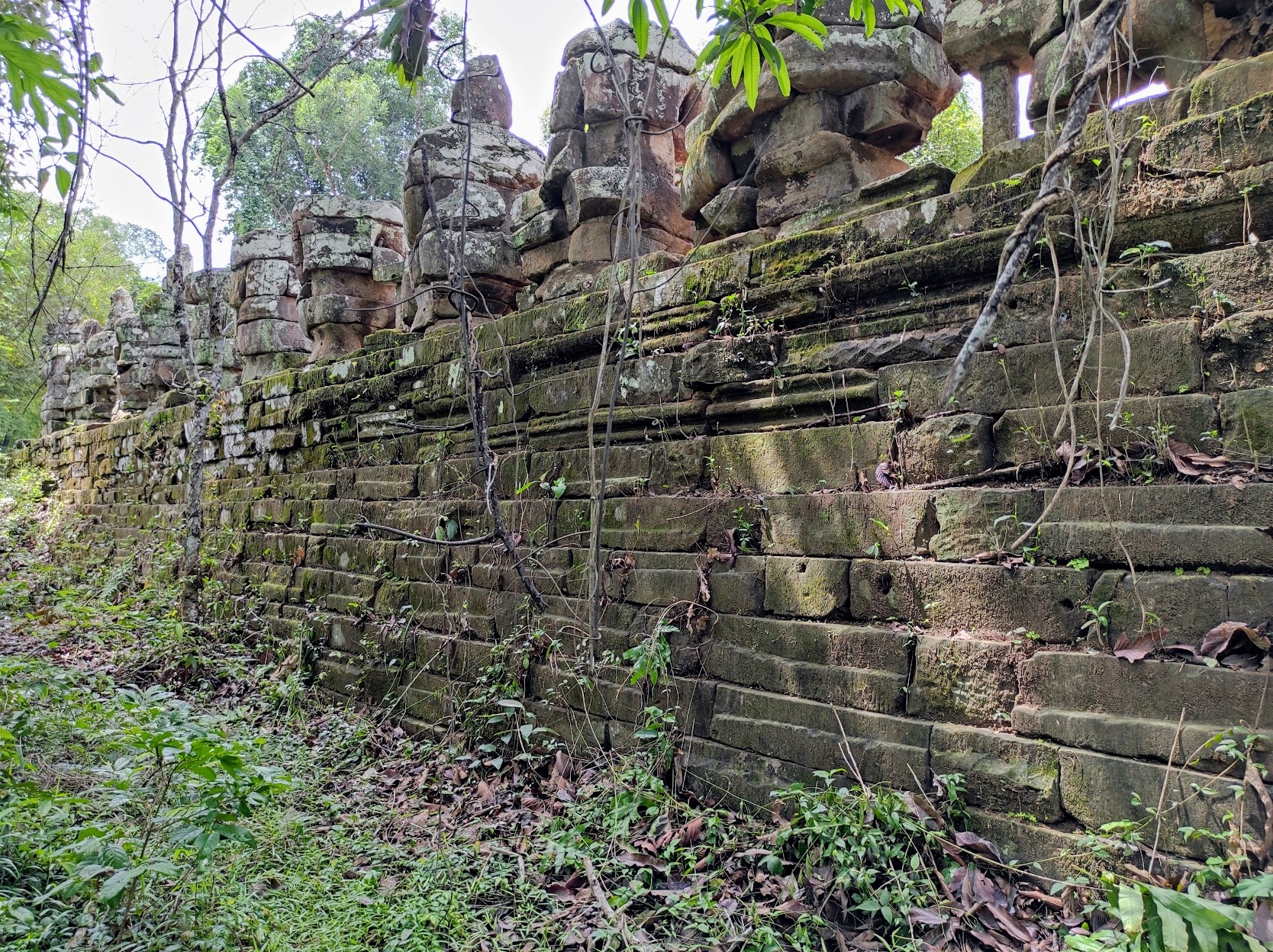


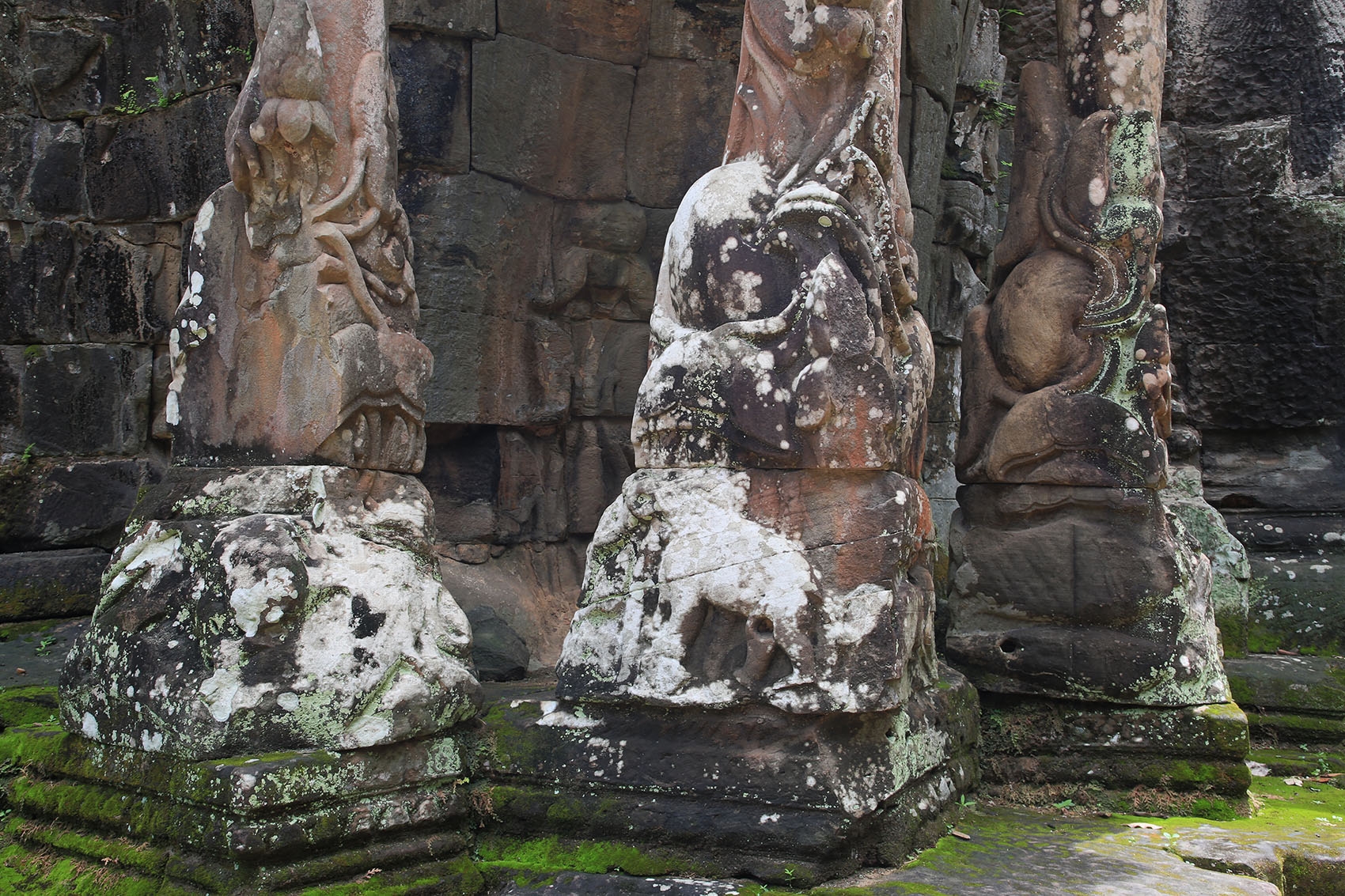
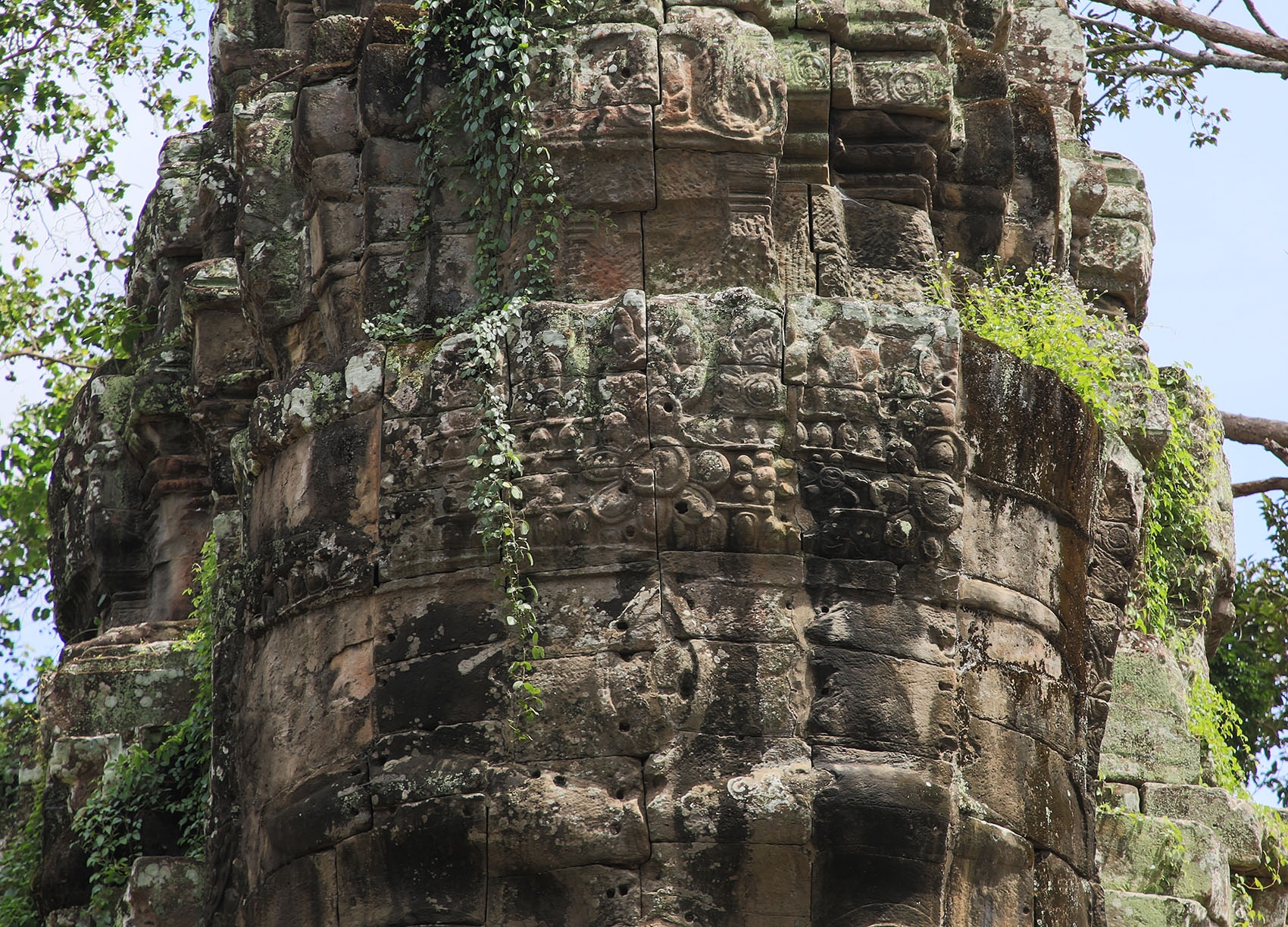
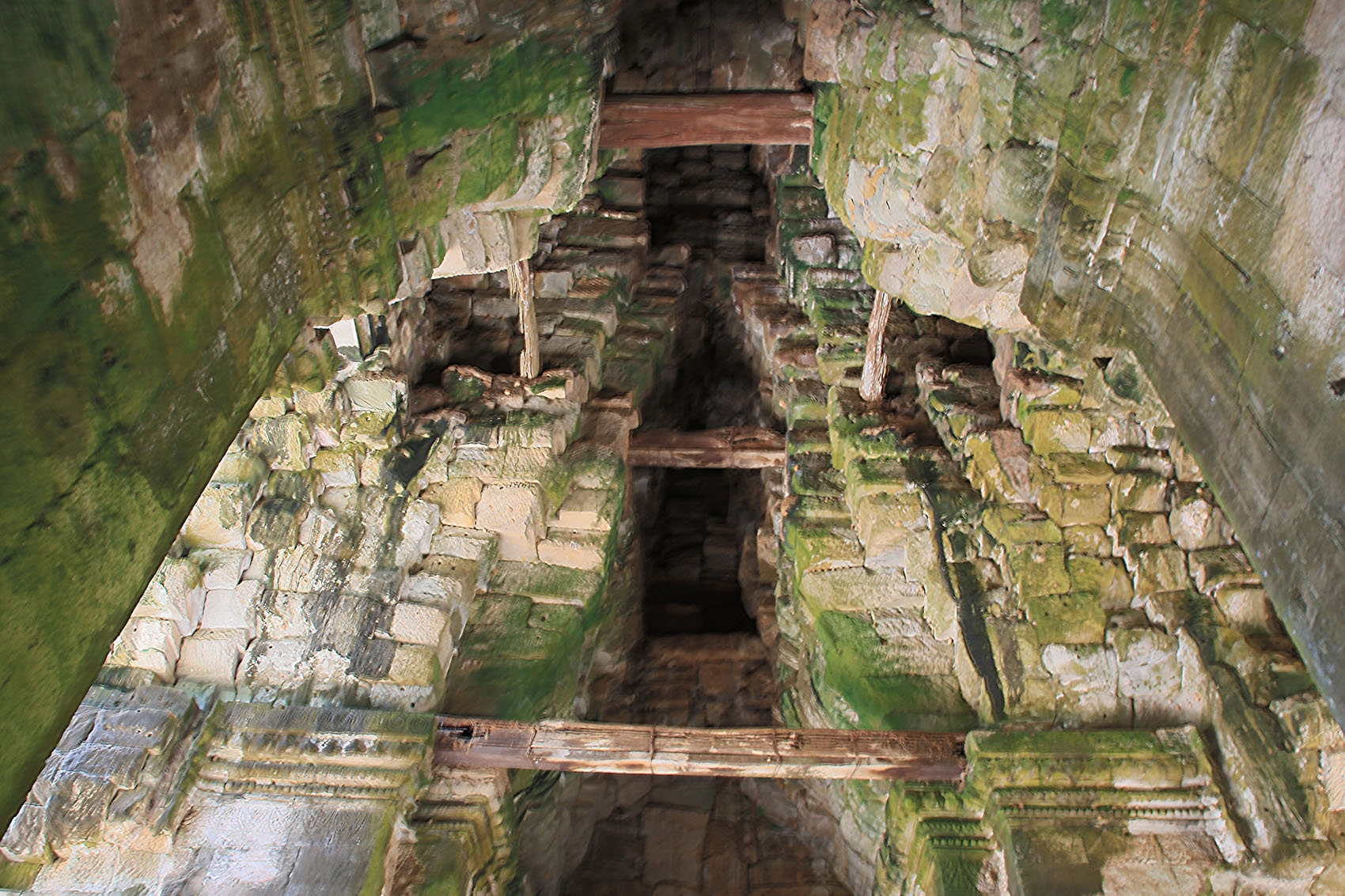
History
Some interesting notes from 1920, as it turns out, Victory Gate also had “spurs” similar to those seen flanking the entrances at the other four gates.
Victory Gate. The east exit of Angkor Thom by the Victory Gate has taken great interest for visitors today owing to the reconstruction of the admirable pattern of the balustrade, an enormous naga supported by a line of giants. Most of the Devas who on the south side play this role of carriers have been found: they were lying in separate pieces and in disorder in the fallen land at the foot of the retaining wall of the old causeway, over which passes in minus the current route. The wall, in poor condition in its few preserved parts, has been consolidated or completed with laterite blocks; they were provided by the demolition of two spurs, from the late period, attached to the wall; erected on both sides of the door and at some distance, they must have barred access to the berms.
The reconstitution of this line of giants undertaken in the course of June is nearly completed and the search for the Asuras that formed the other balustrade has begun. Success is more problematic for that side that has suffered more.
BEFEO Chronique 1920
Historical Images – 1922 to 1931 via EFEO & Gallica/Le Chene


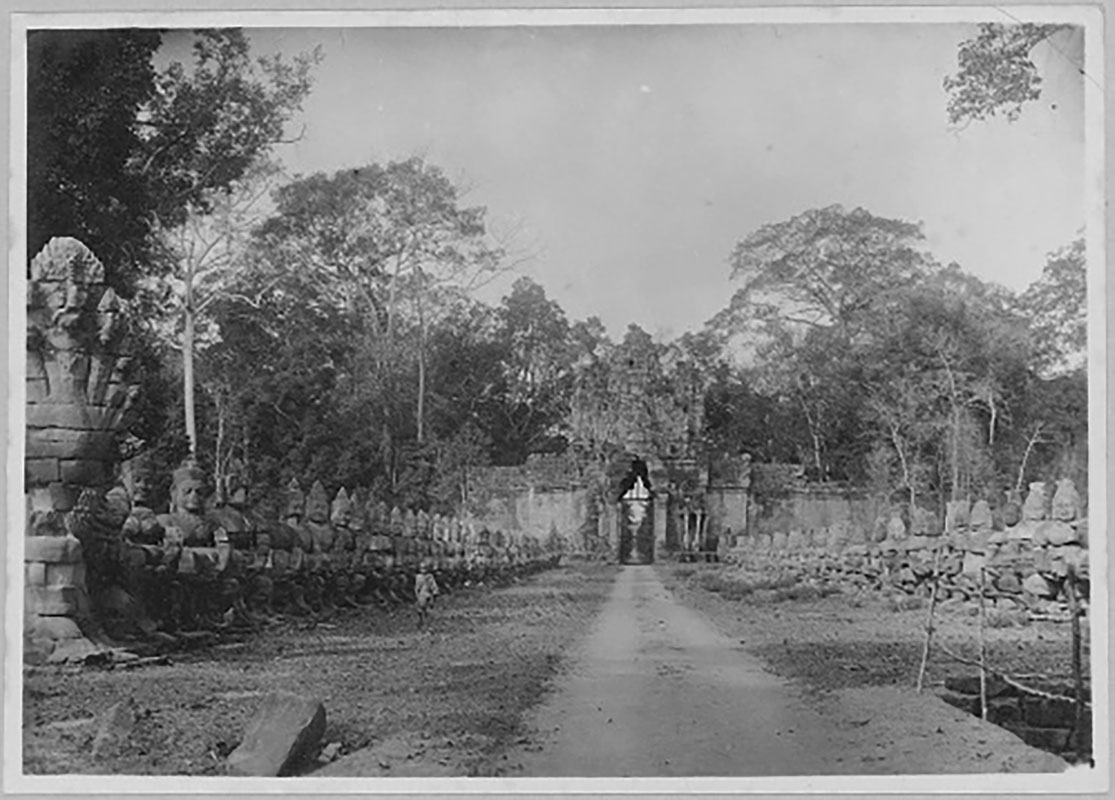


Inscriptions
There are four registered “inscriptions” that are labelled as “graffiti”
- K. 889 – on the enclosure wall – singular Khmer text
- K. 890 – on the elephant – two items of singular Khmer text
- K. 896 – singular Khmer text
- K. 1018 – recorded from a tricula – singular Khmer text
Map
Site Info
- Site Name: Angkor Thom - Thvear Chey Khmer Name: ទ្វារជ័យ
- Reference ID: HA11654 | Posted: January 20, 2021 | Last Update: June 11th, 2021
- Other Names: Thvear Chey, Victory Gate, ខ្លោងទ្វារជ័យ (ខ្លោងទ្វារជ័យជំនះ)
- Tags/Group: 12th Century, Angkor, Angkor Thom, Map: Top 100 Temples & Ancient Sites (Siem Reap), Temples
- Location: Siem Reap Province > Krong Siem Reab > Sangkat Nokor Thum
- MoCFA ID: 370
- IK Number: 473.01
- Inscription Number/s: K. 889, 890, 896, 1018

